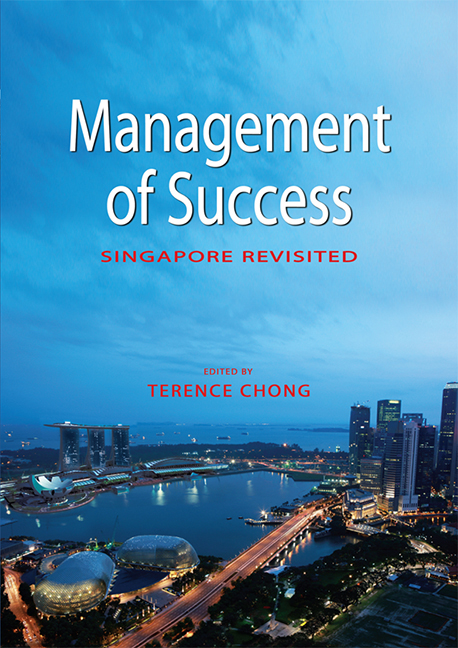Book contents
- Frontmatter
- Contents
- List of Tables and Figures
- Foreword
- Message
- Quote
- Preface
- The Contributors
- 1 Introduction: The Role of Success in Singapore's National Identity
- SECTION 1 SINGAPORE IN THE BIGGER PICTURE
- SECTION 2 LEADERSHIP, POLICY AND POLITICS
- SECTION 3 THE RESTRUCTURING OF THE ECONOMY
- SECTION 4 THE TRANSFORMATION OF SOCIETY
- SECTION 5 THE LAW
- SECTION 6 MODIFICATION OF THE ENVIRONMENT
- SECTION 7 COMMUNITY AND NATIONAL SECURITY
- SECTION 8 LIFE IN SINGAPORE
- Index
1 - Introduction: The Role of Success in Singapore's National Identity
Published online by Cambridge University Press: 21 October 2015
- Frontmatter
- Contents
- List of Tables and Figures
- Foreword
- Message
- Quote
- Preface
- The Contributors
- 1 Introduction: The Role of Success in Singapore's National Identity
- SECTION 1 SINGAPORE IN THE BIGGER PICTURE
- SECTION 2 LEADERSHIP, POLICY AND POLITICS
- SECTION 3 THE RESTRUCTURING OF THE ECONOMY
- SECTION 4 THE TRANSFORMATION OF SOCIETY
- SECTION 5 THE LAW
- SECTION 6 MODIFICATION OF THE ENVIRONMENT
- SECTION 7 COMMUNITY AND NATIONAL SECURITY
- SECTION 8 LIFE IN SINGAPORE
- Index
Summary
THE SINGAPORE STORY AS A SUCCESS STORY
The Singapore story is often narrated as a success story. It is a story of a little island cut from its hinterland and saddled with the challenges of mass housing, high unemployment and an uncertain future. Regardless of storyteller, the Singapore success story has always unfolded in a consistent manner. It begins with the “moment of anguish”, a painful self-realization of an unformed nation, the existential fear for one's self, followed by the Herculean effort to overcome all the odds, and finally, the achievement of success. Through hard work, pragmatic policies and sound leadership, the island made the transformation from an “absurd proposition” to a global city. A quick glance at several mainstream narrations of the Singapore story will show just how central the concept of success has become to the nation-building project. Publications such as Management of Success: The Moulding of Modern Singapore; Singapore: The Struggle for Success; Singapore: Re-engineering Success; Singapore's Success: Engineering Economic Growth; From Third World to First: The Singapore Story and so on have not only examined key public policies which have borne much fruit and contributed to the general levelling up of Singapore society but have also, as a body of literature, supported the implicit suggestion that success is a faithful companion of nation-building. Such publications and many others like them have framed the Singapore story with a straightforward linear narrative where events such as the 1985 recession, the 1997 Asian financial crisis, September 11, and SARS are presented to accentuate the cyclical act of meeting challenges and duly overcoming them. It is a story where the obstacletriumph binary is a necessary leitmotif. This body of literature, together with the state-friendly agents of knowledge production, including National Education and the local press, lends an evolutionary logic to the Singapore nation, thus allowing it to be imagined as dynamic, forward-looking and achievement-oriented.
The Singapore success story is usually narrated in two different ways, sometimes simultaneously. First and foremost, it is a story of material success. It is a tale of rapid transition from colonial port to global financial centre that pays homage to the coherent industrialization and urbanization processes that have swept across the island over four decades.
- Type
- Chapter
- Information
- Management of SuccessSingapore Revisited, pp. 1 - 18Publisher: ISEAS–Yusof Ishak InstitutePrint publication year: 2010

